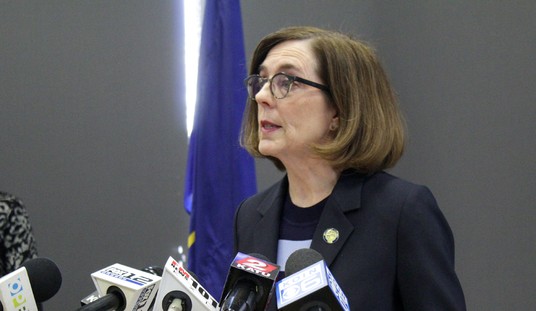That’s not all they ignored, either. According to e-mails obtained by the AP, one White House official who helped plan Obama’s big photo op at the plant earlier this year dismissed a news story about Solyndra’s financial troubles with, “Seems B.S.” A few months earlier, the same chump ignored the alarm bells being rung by accounting firms and instead accepted at face value Solyndra’s assurances that they were doing well, writing, “Fantastic to hear that business is doing well — keep up the good work! We’re cheering for you.”
Everyone knew the company was toast. Except the people in charge of your money.
A 2009 report by the Energy Department’s inspector general warned that the DOE lacked the necessary quality control for the loan guarantee program, which was created in 2005 to support clean-energy projects that could not obtain conventional bank loans due to high risks.
In July 2010, the Government Accountability Office said the Energy Department had bypassed required steps for funding awards to five of 10 applicants that received conditional loan guarantees.
The report did not publicly identify the companies that were not properly vetted, but congressional investigators say one of them was Solyndra. The company was the first to receive a loan guarantee after the program was expanded under the 2009 stimulus law.
In March, DOE Inspector General Gregory Friedman again faulted the loan program for poor record keeping. A report by Friedman said the program “could not always readily demonstrate, through systematically organized records … how it resolved or mitigated relevant risks prior to granting loan guarantees.” According to the report, the department kept limited or no electronic data on 15 of 18 loan guarantees examined.
Another official tells the AP that that FBI raid of Solyndra last week is indeed related to a fraud investigation into whether the company lied to federal officials about the state of its financial health. I wonder: Can you be guilty of fraud if the truth was staring your victim in the face the entire time, to the point where where two minutes of googling trade-news articles about the company would have revealed the depth of the problem? At what point does the victim’s idiocy/recklessness become an affirmative defense?
Via Andrew Stiles at NRO, here’s another new e-mail from January of this year illustrating why I’m amazed the White House would take the political risk of first throwing half a billion dollars at Solyndra and then agreeing to restructure the loan on less favorable terms to keep the company going awhile longer. Even their own OMB guys saw the iceberg coming. Why didn’t the Energy Department turn the ship when it had a chance?
Although the decision has already been made for OMB not to play an active role in determining what to do with Solyndra, the Director/S-1 meeting tomorrow might present an opportunity to flag to DOE at the highest level the stakes involved, for the Secretary to do as he sees fit (and be fully informed and accountable for the decision). Although optics are generally out of our lane, it may be worthwhile for the Director to privately make this point to the Secretary:
Given the PR and policy attention Solyndra received since 2009, the optics of a Solyndra default will be bad whenever it occurs. While the company may avoid default with a restructuring, there is also a good chance it will not. If Solyndra defaults down the road, the optics will arguably be worse later than they would be today. At that point, additional funds have been put at risk, recoveries may be lower, and question will be asked as to why the Administration made a bad investment, not just once (which could hopefully be explained as part of the challenge of support innovate technologies), but twice (which could easily be portrayed as bad judgement, or worse). In addition, the timing will likely coincide with the 2012 campaign season heating up, whereas a default today could be put in the context of (and perhaps even get some credit for fiscal discipline / good government because the Administration would be limiting further taxpayer exposure) letting bad projects go, and could make public steps it is taking to learn lessons and improve / limit future lending.
Even more incredibly, this wasn’t the only federal loan that Solyndra applied for,either. L.A. Observed dug around in the company’s S-1 SEC filing and found that they had applied for a second loan for $469 million in September 2009. The first part of their application was approved; it’s unclear what happened after they filed the second part, whether the Energy Department rejected it or Solyndra withdrew it. Presumably it’s the latter or else we’d be hearing “at least we got the second loan application right!” from Jay Carney non-stop.
Here’s one more piece for your evening Solyndra reading. I’ll leave you with this excerpt:
Solyndra spokesman David Miller also did his share of glad-handing with the White House aides handling Obama’s trip.
“If you tire of the White House life and ever decide you want to move out with your best friends in [California] let me know,” Miller emailed to White House special assistant Johanna Maska the day after the visit. He added that “we could find you a great corporate gig very quickly.”








Join the conversation as a VIP Member